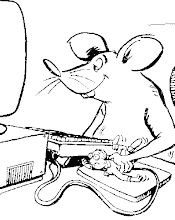The early morning W is typical of the problems faced at this time of day. The big limitation is the narrowness between the Bollinger Bands compared to the risk - IMO no trade.
The other problem it highlights, is backtesting systems using RSI. Only the final value for the candle based on the Close is available. The same candle on Price could have been formed in many ways.
Was it an Open, then down, then up and then move to the Close? Or was it an Open, then up, then down and then move to the Close? If you had decided to trade it, think of the two different outcomes and what they would do to your trade.
The first M looks great - HPLRHR. How you trade it is down to personal style. I use split trades and I would have ended up with running two of them. The minimum result would have been break even overall.
The next question is, "Does this count as a failed M etc....?". The answer depends on your definition of a "good profit". So go Long or stay out as it fails depending on your viewpoint.
The second M looks great as well - another HPLRHR. Again it fails to deliver big time! The comments about this one are the same as the last.
Just because you get a series of high probability trades, it does not mean one of them will work before you get destroyed! IMO, it is vital to survive in order to thrive at a later time.
What if I had decided to trade the initial W and it hadn't got stopped out? The Ms take on a whole new perspective, they are my enemies! Now I have to decide just how close I would move up the S/Ls on the runners when they form. If I survive I am going to add when they fail....
Context, context, context.
cheers theory
Subscribe to:
Post Comments (Atom)

hi, Theory.
ReplyDeleteNice blog. I think some more insights into what you meant by context, context, context, will be very useful, as the WM system has a tilt for scalping, whereby traders are encouraged to trade every WMs (though with the health warning of hplrhr, lol).
anyways, very good blog, and keep it up.
Thanks Trigger,
ReplyDeleteI'll re-read that bit to see if the emphasis needs changing.
Using the criteria I have listed, it is unusual to get three trades in a day on the FTSE. In fact, there are many days when there are no trades at all, it's the width of the Bollinger Bands compared to the risk that eliminates lots of WMs.
cheers theory